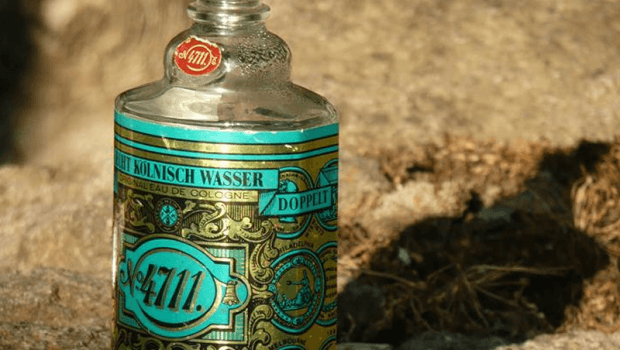
Kölnisch Wasser: What The World Wears
Kölnisch Wasser or the Water of Cologne is a perfume which originated in the German city of Cologne. It was an Italian, Johann Maria Farina who in the year 1709 for the first time created the recipe of the perfume. Since that point in time, it has become globally renowned.
The Kölnisch Wasser is a simple enough composition of 2% to 5% of essential oils (sometimes more), water, alcohol, and a distinct blend of particular extracts. Originally, it was famous as a drink which was known as – Aqua Mirabilis. Its creator Gian Paolo Feminis had travelled extensively and finally decided to settle in Cologne.
When diluted ethanol (of a concentration of roughly anywhere between 70 and 90 %) forms the base of a certain Eau de Cologne then it also contains a well-defined mixture of citrus oils borrowed from – lemons, oranges, tangerines, clementine’s, bergamots, limes, grapefruits, blood oranges, and also bitter oranges. Other oils that are included in its preparation of Kölnisch Wasser are – rosemary, thyme, oregano, petitgrain, jasmine, neroli, lavender, tobacco, et cetera.
Snippets from the annals of history
Throughout history perfumes have been an object of desire, from the royalty to the everyman, everybody wants one for themselves. Fragrances and the sense of smell are among the least understood subjects. They almost seem to have a magical quality which the human imagination fancies.
Researchers have been able to determine a certain rudimentary olfactory system that has been operating as life develops. Furthermore, the one factor that chemists struggled with in the earlier times was how to carry the naturally or otherwise available senses. To this question, water came as the most important elemental answer. The ‘sense of smell’ across the globe thus could be aroused by a simple assimilation of water and materials of sorts. It was in-fact something adopted by humans for their own socio-anatomic development.
The medium through which the smell travels from the water to the organ was air, therefore, a form of filtration system was also required to supply this information without any form of corruption. Today we know that the olfactory system, just like most quadrupled, was also used by primordial humans who went on to search for food or when looking for safety. It is thus believed that the importance of this system cannot be disputed under any circumstances. Even in the everyday human lives, the nose performs numerous functions than we actually realise.
As far as historical records are concerned, through the annals and pictographic representations, it has been found that many of the ancient cultures used fragrant substances on a regular basis. Most of which were naturally sourced. To further give you an idea, Etruscans, Sumerians, Egyptians, Greeks, Romans and the Chinese used varieties of fragrances.
Back in the time, usage of fragrances was not limited to bodily uses it was also used as a form of divine offering. Among the popularly used substances in the same regard were – Frankincense, myrrh and Jasmin were at all times, exclusively under the sphere of the high priests. They believed that such fragrances particularly assisted them in their communication with the divine powers. The smoke from the burning fragrant substances would apparently carry their messages directly to their deities. Precisely for these reasons, incense is something that is used during many of the spiritual or ceremonial conductions. From catholic churches to Asiatic temples as well as the primitive tribal cultures, all of them offer the same logic.
Have you ever heard of the Latin idiom – per fumum? Yes, it is also the very origin of the word ‘perfume’ and means, through the smoke. Upon considering the Old Testament, the particular chapter titled as – Exodus, contain about 30 references to the recipes of perfume.
Why did it become so popular?
It was the simple desire of beauty and self-care that popularised the fragrances. There are numerous instances from history that describe such scenarios. Take for example the one provided by a certain Roman fresco. In one of his writings, he famously depicts a young maiden filling a bottle of perfume. On the other hand, in the Egyptian wall panel that was found in a grave in Thebes. One of the images that are distinctly brought out is of that of a young woman, rather a lady, sniffing her perfumes. Furthermore, in the picture, she is also shown wearing a rather typical perfume cone which is melting due to her bodily heat. Now moving to the Asian continent, Kalidas, an Indian poet famously wrote the following in the same regard:
“In the summer, the beautiful ladies perfume their busts with the oil of sandalwood, their hair with Jasmin water, their bodies with rose water, to prepare themselves for love”.
In the European continent, fragrances erupted as a cultural phenomenon in the 12th century itself. Certain artefacts that date back to the time include amulets that were designed to look like small apples. The speciality of these apples was that it had a small opening on top through which the scent would come out. Such items often classified as artistic jewellery pieces were particularly popular among a certain class of people and were sold under the name of ‘fragrance apples’ or ‘pommes d’ambre or pomander. Potpourris also gained quite a bit of popularity. They were made using the blossoms, various kinds of fruits and spices. Thus they were able to mask the bad odour of the houses quite efficiently. Most of the utilitarian products such as, leather gloves that were particularly worn by the ladies belonging to the elite class were most of the time sold after being properly perfumed.
The Water from Cologne
Professional perfumers first emerged in France centred in the city of Grasse that was in the south of the country. This region, later on, came to be known as the capital of capital of fragrant plant cultivation as well as leather making. These traditions were brought to the region in the 16th century by Catherine de Medic herself. Soon enough it fragrances became a common name among the royalty. At the same time, another belief took shape. As per which water was assumed to have the potential of extracting the life force right out of the human body. Hygiene was exchanged for fragrances and thus came about the first deodorant. In England, on the other hand, Oliver Cromwell went on to declare that, “Perfume is the work of the devil”. Thus passing a decree through which the perfume was banned.
Things began to change in the 17th century with the introduction of ‘Eau de Cologne’ or Cologne Water. Its recipe was believed to have been brought to the southern French region by a certain Italian by the name of Farina. The recipe was unique because it incorporated an uplifting combination of citrus oils, rosemary and alcohol.
Eau de Cologne thereon became famous in the whole of Europe. It became so well renowned in France that Napoleon had made a ruling through which invitations were laid out to people to perfect the Eau de Cologne.
The 4711
The most popular of the Kölnisch Wasser varieties is the 4711. It was originally made in the year 1799 by Mäurer & Wirtz. It has since then transformed into a globally renowned brand. The flagship store of the 4711 is located in Glockengasse, Cologne. It is quite a popular tourist destination.
Kölnisch Wasser was originally created at the hands of Johann Maria Farina, an Italian man who lived in Cologne. It was he who first came up with the name – Eau de Cologne. A document quotes him saying that the new fragrance reminded him of an Italian spring morning and the morning after the rain which carries a distinct smell of mountain daffodils and orange blossoms. Farina named it as Eau de Cologne because he wanted to honour his hometown.
Now, history gets slightly distorted here and takes the shape of a legend. It is said that a certain Carthusian monk on the 8th of October, 1792 prepared a gift for the wedding of the merchant Wilhelm Mülhens. This new recipe was kept a secret and made famous by the name of aqua mirabilis or miracle water. It was reportedly used for both internal and external purposes. The new fragrance enabled Mülhens to construct a new factory in Glockengasse thus establishing his brand.
A certain dispute then came up between Peter Joseph Mülhens and Wilhelm Mülhens, his son. It concerned with the trademark and the name of their brand. As a result, the name of the company was formalised as Eau de Cologne & Parfümerie Fabrik Glockengasse No. 4711 gegenüber der Pferdepost von Ferd. Later on, in the early 1990s, the company was bought by Wella AG, Darmstadt, Germany and since then has developed as a cosmetic brand of international repute.
